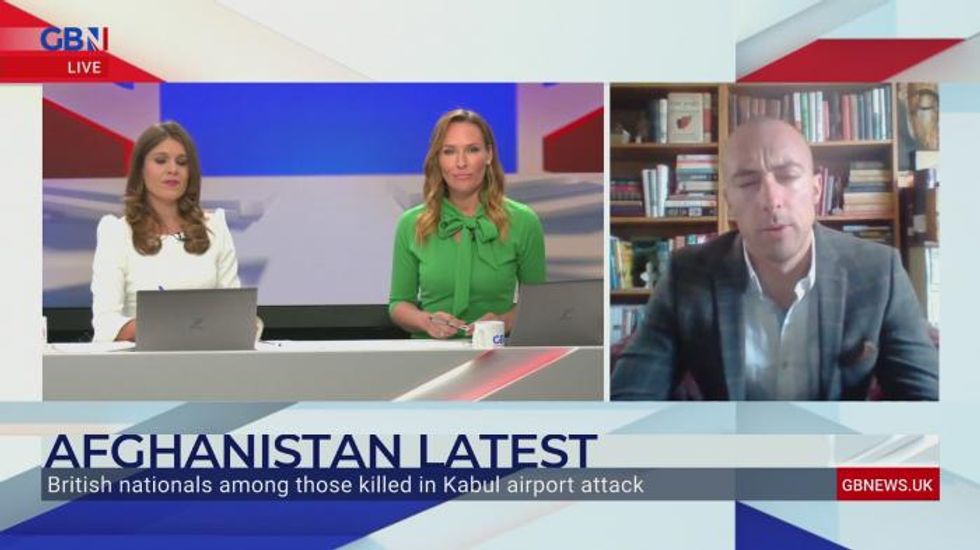President Biden authorised the drone strike and it was ordered by US defence secretary Lloyd Austin
Don't Miss
Most Read
Trending on GB News
The US military said it used a drone strike to kill a member of the so-called Islamic State group’s Afghanistanaffiliate.
The strike came amid what the White House called indications that Isis-K planned to strike again as the US-led evacuation from Kabul airport moves into its final days.
US president Joe Biden has set August 31 as his deadline for completing the exit.
Mr Biden authorised the drone strike and it was ordered by US defence secretary Lloyd Austin.
The air strike was launched from beyond Afghanistan less than 48 hours after the devastating Kabul attack that killed 13 Americans and scores of Afghans with just days remaining in a final US withdrawal after 20 years of war.
US Central Command provided few details, though it said it believed no civilians were killed in the strike.
The speed with which the US military retaliated reflected its close monitoring of IS and its affiliates and years of experience in targeting extremists in remote parts of the world.
But it also shows the limits of US power to eliminate extremist threats, which some believe will have more freedom of movement in Afghanistan now that the Taliban is in power.
US central command said the drone strike was conducted in Nangahar province against an IS member believed to be involved in planning attacks against the United States in Kabul.
The strike killed one individual, Navy Capt William Urban said.
It was not clear if the targeted individual was involved directly in the suicide blast outside the gates of the Kabul airport on Thursday, where crowds of Afghans were desperately trying to get in as part of the ongoing evacuation.
The air strike came after Mr Biden declared that perpetrators of the attack would not be able to hide.
“We will hunt you down and make you pay,” he said.
Pentagon leaders told reporters on Friday that they were prepared for whatever retaliatory action the president ordered.
“We have options there right now,” said Maj Gen Hank Taylor of the Pentagon’s Joint Staff.
The president was warned on Friday to expect another lethal attack in the closing days of a frantic US-led evacuation.
White House press secretary Jen Psaki said Biden’s national security team offered a grim outlook.
“They advised the president and vice president that another terror attack in Kabul is likely, but that they are taking maximum force protection measures at the Kabul airport,” Ms Psaki said, echoing what the Pentagon has been saying since the bombing Thursday at Kabul airport.
Late on Friday, the US state department again urged Americans to stay away from airport gates, including “the New Ministry of Interior gate”.
Few new details about the airport attack emerged a day later, but the Pentagon corrected its initial report that there had been suicide bombings at two locations.
It said there was just one – at or near the Abbey Gate – followed by gunfire. The initial report of a second bombing at the nearby Baron Hotel proved to be false, said Maj Gen Hank Taylor of the Pentagon’s Joint Staff. He attributed the mistake to initial confusion.
Mr Biden still faces the problem over the longer term of containing an array of potential extremist threats based in Afghanistan, which will be harder with fewer US intelligence assets and no military presence in the nation.
Emily Harding, a former CIA analyst and deputy staff director for the US senate intelligence committee, said she doubted Mr Biden’s assurances that the United States will be able to monitor and strike terror threats from beyond Afghanistan’s borders.
The Pentagon also insists this so-called “over the horizon” capability, which includes surveillance and strike aircraft based in the Persian Gulf area, will be effective.









